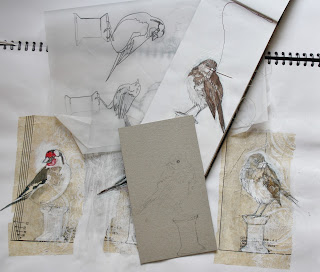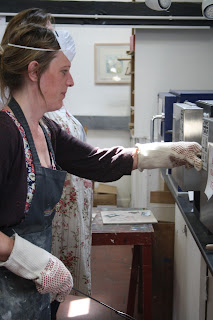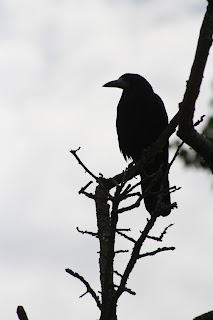You may have gathered by now that I am an artist who uses collagraph to make my work. I choose collagraph because it is an exciting, versatile and a creative way to make an intaglio plate. Not because I am unable or do not have the facilities to etch. It is a positive choice about the way I make my work.
applying carborundum
In the late 70's I did a fine art degree and learnt to etch on copper. Collagraph has been an extension of that process after discovering it being used at a Steiner school in Gloucester over 20 years ago.
gluing highlights
I spend a great deal of time looking up other collagraph artists and researching my chosen method. I am excited by other people's working processes.
shellacked plate
And this post has come about because I stumbled across an American Youtube video describing Collagraphy (a term I hate) as and I quote, 'Poor persons etching', I am incensed to have my working process described in this way.
inking up
When not looking at cats on the computer or putting things on my Facebook page I check out what is happening in the printmaking world. It is good to know what is out there. I can see why galleries think that collagraph could be considered a second rate, ameteur printmaking process. For a start no one seems to know how to spell Collagraph...it's Collagraph, not Collograph.
blue, brown and black inking
It's an intaglio process in it's own right and you need an etching press to print them. Relief printing them alone creates a thin image, a combination of the 2 creates magic.
Rook with Stag beetle
There are wonderful role models to look up to, Brenda Hartill and Peter Wray, both have developed methods of making and inking collagraph plates, leading the way in raising the collagraph profile.
Collagraph with gum arabic transfer
There are really informative blog posts, information and books available.
Collagraph with gum arabic transfer
It seems to me that more than any other process, it's accessibility and low tech platemaking
Magpie with Longhorn beetle
is it's strength and leads to exciting, experimental images.
Rook with moth
I am completely absorbed by the process of making plates and over the years I have discovered the secrets to making collagraphs is in sensitively made plates and the skill of technically correct inking.
Got it pegged
But the biggest questions we have to ask ourselves is, why are we using this process over other ways of plate making and what am I saying with it? To say that it is a poor persons etching has maddened me more than the constant misspelling of the process I am completely and wholeheartedly committed to. I know why I am an artist using collagraph printmaking...I would be interested in why you do, or even why you don't!!
The images of birds with labels and bulldog clips are from the plates I made at Art in Action. Got it pegged was inspire by my day out at Slimbridge.












































